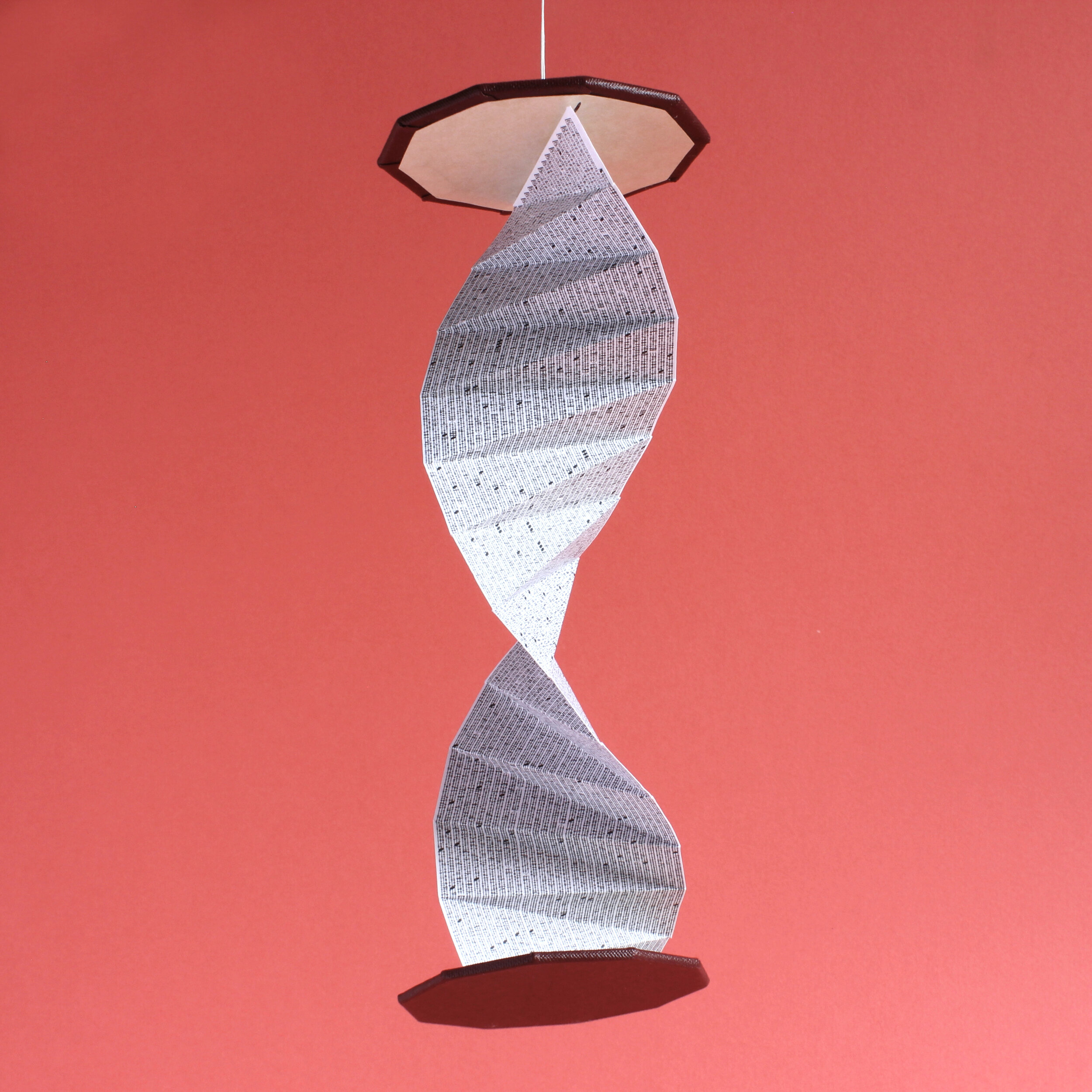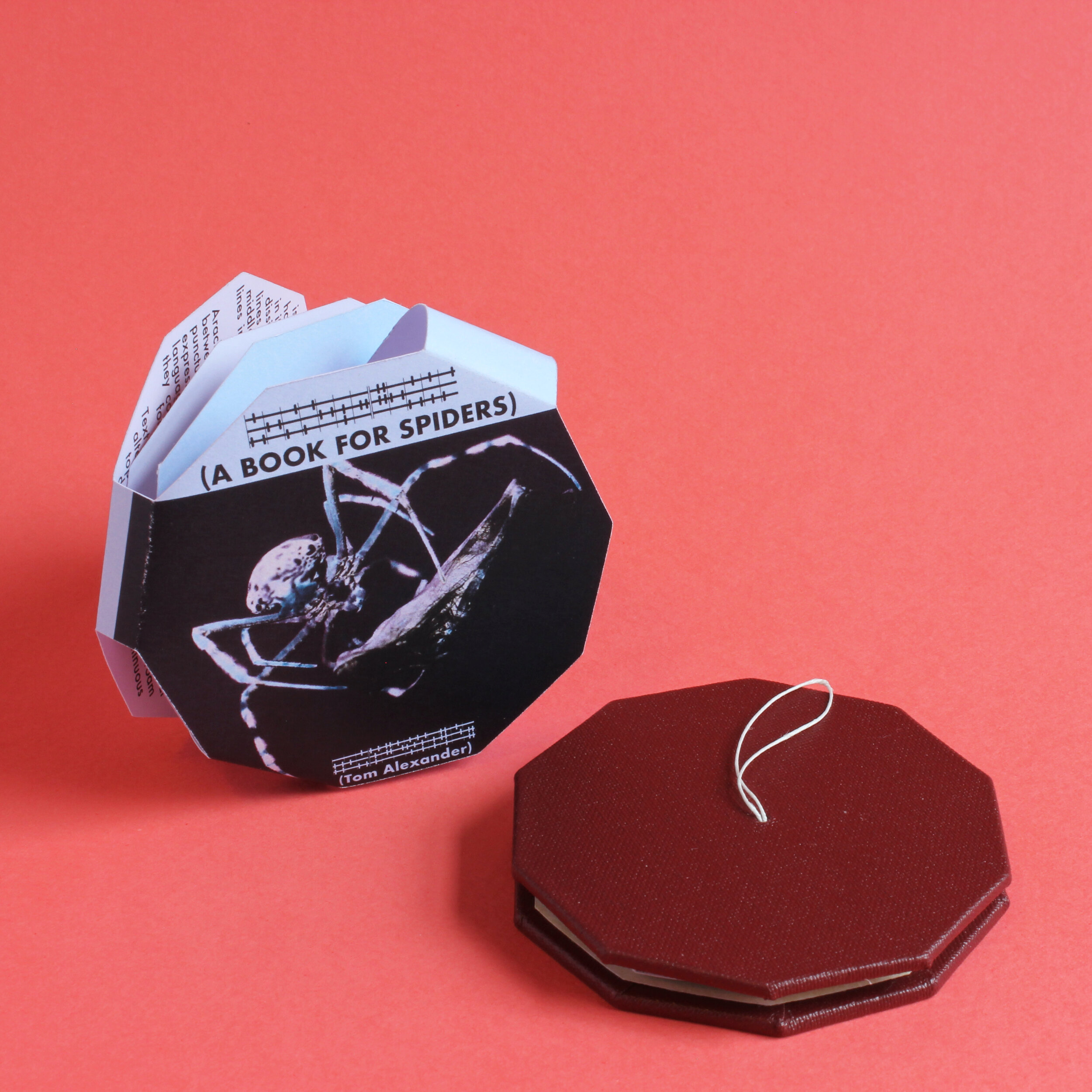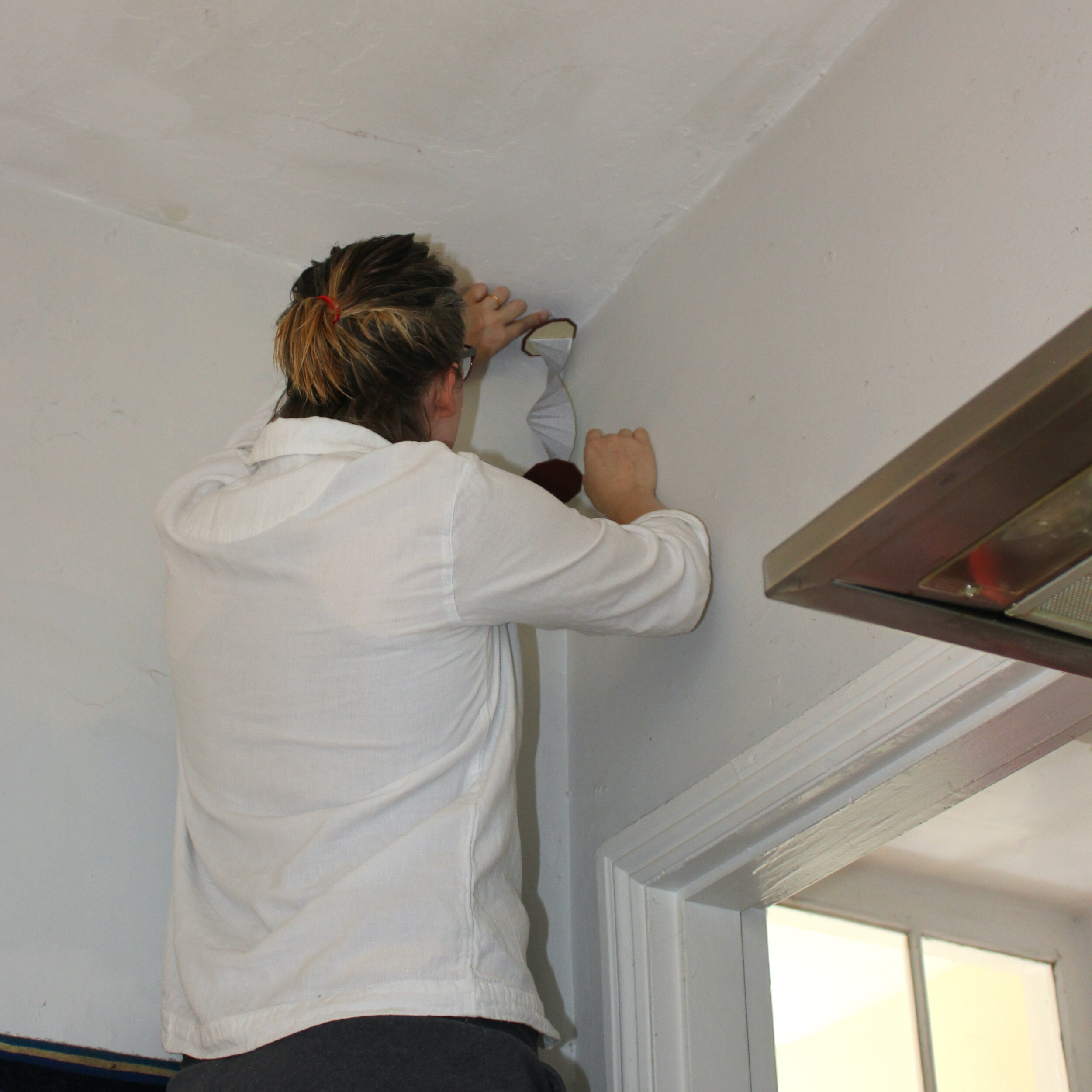Hardback, 2021. First edition of 10 (+2 Archive copies)
Overview
A commercial crime thriller, written for the arachnid reader. The text is set in a custom typeface, running up and down the length of the single central page. An outer dust jacket explains the concept to humans, advises them as to the best place to position the book and contains a link to an English translation of Missing Limbs - the bestselling(*) arachnid thriller contained within.
Background
A Book for Spiders started as a sort-of funny idea, quickly scribbled into a notebook for a tiny pamphlet (a la Mouse Holes) which humans would stick in the high corner of a room so that spiders could read it. My partner saw my notebook lying open and told me I should definitely make it. As an inveterate people-pleaser, I set to work. I had made tiny publications before. This would be easy.
I reasoned that spiders couldn't read English, so spent some time considering what their text might look like. I had just done some font-mashing for Portrait/Landscape and mucked around with some basic ideas for spider letterforms. I figured spiders would be sensitive to vibrations on their webs and after some doodling, made an alphabet based adapted from musical notation. This formed the basis of Vox Aranae, which is the slightly pompous name I gave my spider font.
Then, of course, I had to think about content. Obviously, a typeface that couldn't be read by humans, set at a tiny size, could have any old filler in there and no-one would be any the wiser. But I would know, so obviously I was compelled to write a complete thriller about two mis-matched spiders grudgingly working together in order to take down a murderer. It wasn't an 80,000 word novel, but a genuine attempt to create the spider equivalent - smaller in size, but similar in structure and packed with as many genre tropes as possible.
With that done, I set my 30 odd chapters of clichéd crime fiction into a small pamphlet. I decided that while the book itself would be all for spiders, I also wanted an outer wrap for humans, explaining the book, offering the possibility of translation and also giving instructions on where to put it so spiders could read it. I laid out the text and wrapped it around the small volume I had created. It was exactly what I had set out to do.
But... eh. It didn't feel that different from Mouse Holes and I don't like making the same thing twice. It was, quite frankly, a bit of a bummer, because I had already spent more time on this throwaway idea than intended and I knew that there was more to come.
At this point, I had a break enforced upon me. I had signed up for the summer school at the London Centre for Book Arts - a week of hands-on instruction on various bookbinding techniques. It was a good experience and I learned a lot - namely that I am a slow learner, brutally impatient with myself and that I find group situations cripplingly stressful. I also learned how to bind books. (Seriously, if you're interested in learning book arts, LCBA is a great place to do it. The people are all really nice and knowledgable and they have a ton of cool stuff in the studio. If you can't make it there, then the book they created - Making Books - is a great overview of technique.)
With the course finished, I realised that I could actually make a Book for Spiders. So I began the process of prototyping a hardback version.
One of the issues I had with the traditional spine-bound version was the thought that spiders could get crushed between the pages. This hazard would become more dangerous with thick, heavy hardback covers, so I had to re-think the form and make it more spider-friendly. I decided that as spiders lurk up in corners, so too should the book. A paper-folding course I did at the Working Men's college (as well as this book here) had given me some ideas for alternate structures and I pretty soon hit on this dangling spiral that can fold up into a compact shape that can possibly fit on to a bookshelf.
Getting the construction right took a few goes. I'm not very adept with glue and getting the right amount of PVA in such a small space was... challenging. By the end of the project I had sworn off glue entirely, vowing only to use bindings that don’t require adhesive. We'll see how long that lasts.
The text runs up and down the length of the paper and then over to the other side. One of the problems with making small printed objects is that your margin for error is very small. This came through in both the print and construction. The paper folding was done to exact measurements, but no-one's perfect and any small deviation from the line means errors compounded on themselves and took the paper out of alignment. Trying to find a way to make the text block sit properly in the covers was annoying. Eventually, I stopped trying to find a system and took each one as an individual piece.
Overall, I’m pretty happy with them. Although I spent most of this project wondering why I couldn’t just do something simple and straightforward, I think the end product turned out real purty.
—
(*) - Show me one that’s sold more.



